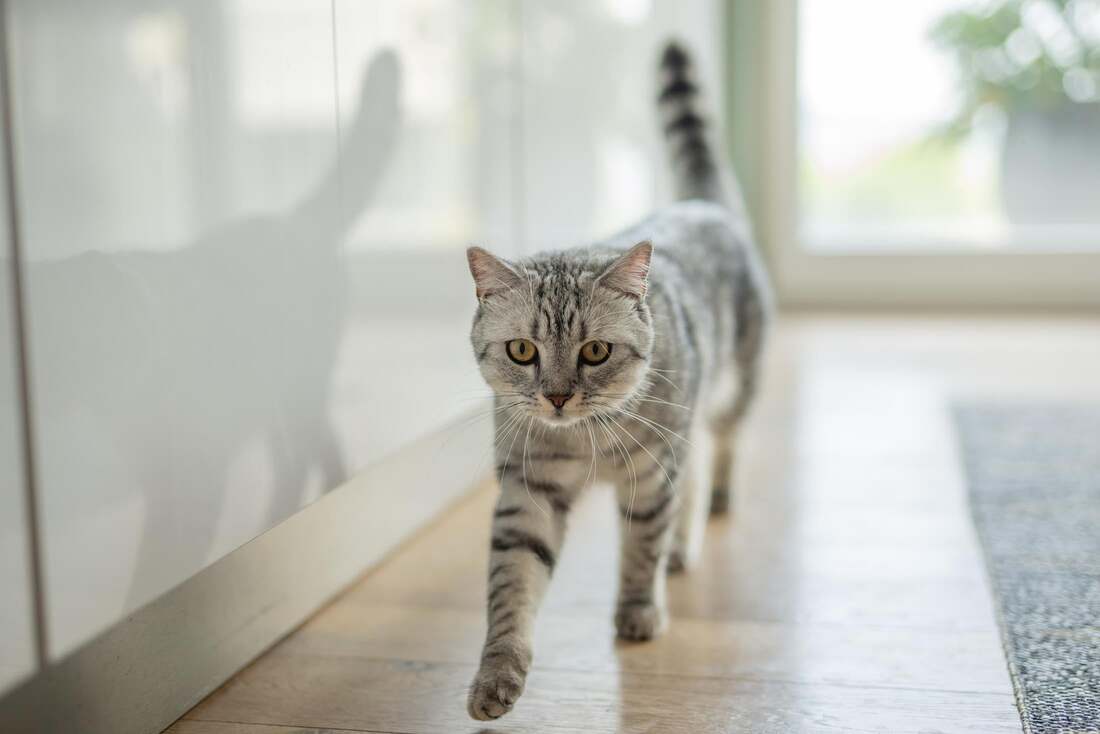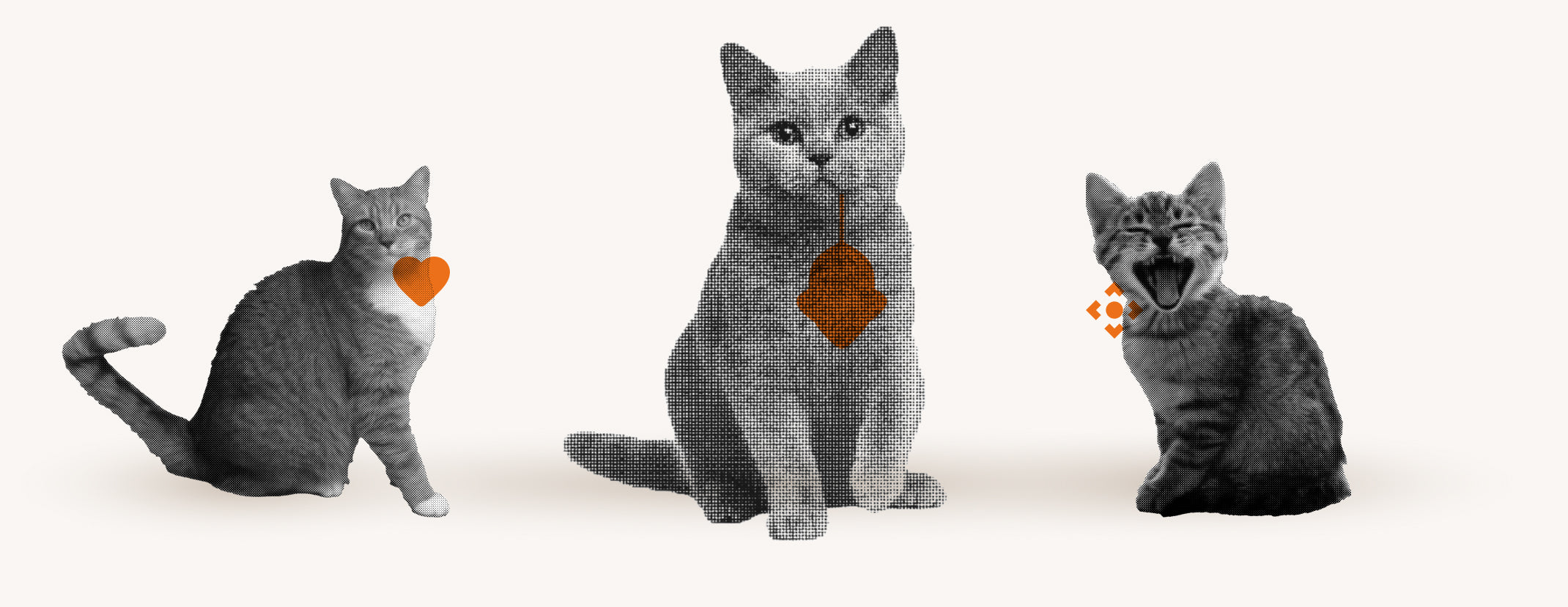Have you ever wondered whether you, as a cat owner, are committing a crime if your cat catches a bird?
This question can cause uncertainty and concern for many cat owners.
Whether it is a criminal offense for cats to catch birds depends largely on local laws and regulations.
In this article you will learn everything you need to know about the legal aspects, practical measures to protect birds and other interesting discussions on the subject.
How many birds do cats really catch?

The discussion about the amount of birds caught by cats is complex and often controversial. It is estimated that up to 200 million birds are killed by cats in Germany every year. This figure may seem alarming at first glance, but it is important to see it in context. Many of the birds caught are among the more common species found in urban and rural settlement areas.
However, it is undeniable that cats can have an impact on local bird populations, especially in areas with high cat density. The main victims are often songbirds that live in gardens and parks. Here are some of the most common bird species caught by cats:
- blackbirds
- house sparrows
- great tits
- robin
Although these species are widespread, their populations may be affected locally by hunting by cats.
Are cats a threat to the bird population?
There is no general answer to the question of whether cats actually pose a threat to the bird population. In residential areas where the density of domestic cats is particularly high, they can certainly pose a threat to certain bird species. Especially during the breeding season, when young birds are most vulnerable, the presence of cats can lead to a significant decline in bird numbers.
According to NABU bird expert Lars Lachmann, simple measures such as restricting cats' access to the outdoors during the critical breeding months of May to July could help to significantly reduce the number of birds killed by cats. It is therefore important that cat owners are aware of the potential risks and act responsibly to ensure the protection of songbirds.
Practical measures against bird hunting
There are various practical measures that cat owners can take to reduce bird hunting by cats. One effective method is to install bird feeders at a safe height . These should be placed so that cats cannot climb up or jump onto them. In addition, the use of special cat deterrent belts on trees can prevent cats from climbing into the treetops and disturbing nesting birds.
Another option is to design the garden in a way that provides safe havens for birds. Dense hedges or shrubs provide ideal hiding places and nesting sites for birds that are difficult for cats to access. Additionally, keeping the cat busy with games can help to make it less interested in going outside and hunting. These measures not only help protect the bird population, but also promote a safe and stimulating environment for the cat.
Cat arrest as a control measure
So-called cat confinement , i.e. temporarily locking up the cat at certain times, can be an effective method of controlling hunting behaviour. Especially during the birds' breeding season from mid-May to mid-July , it is recommended not to let cats outside in the morning hours. This reduces the likelihood of cats hunting young birds, which are particularly vulnerable at this time.
However, it is important that the cat confinement is carried out in a way that does not affect the cat's well-being. Sufficient activity and play in the house can help the cat to feel comfortable even without access to the outdoors. Care should also be taken to ensure that the room in which the cat is kept offers enough stimulation and comfort to avoid stress and discomfort.
Castration to reduce the hunting instinct
Neutering cats can be an effective way to reduce the hunting instinct. This procedure reduces cats' sex drive , which often results in less straying behavior. This can help neutered cats to be less motivated to roam and hunt over large areas.
In addition to reducing the hunting instinct, castration has other benefits. It can help reduce aggression and territorial fights , which in turn reduces the risk of injuries and infections. In addition, castration is an important step in preventing unwanted offspring and can therefore help address the problem of overpopulation of stray cats.
Fines for cats that catch birds
In many regions, fines have been introduced to address the problem of cats catching birds. These measures are intended to help protect bird populations by encouraging cat owners to control their pets' hunting behavior.
The amount of the fine can vary depending on the region and the severity of the offense. In some cases, even repeated violations can lead to increased penalties. The aim is to have a deterrent effect and motivate cat owners to act responsibly.
Legal measures: effective or not?
The effectiveness of legal measures against bird hunting by cats is often questioned. Critics argue that such laws are difficult to enforce and act more as "paper tigers" because monitoring outdoor cat behavior is complex.
Despite the challenges, there are reports that in some areas the introduction of fines has led to a reduction in reported cases of cats catching birds, suggesting that the measures can have a deterrent effect, at least in certain contexts.
No reporting obligation for cat owners
Unlike other pets such as dogs, there is no registration requirement for cats. This means that cat owners are not obliged to register their cats with an authority. This makes it difficult to identify the owners of free-roaming cats, especially when it comes to hunting behavior in nature.
The absence of a reporting requirement has both advantages and disadvantages. On the one hand, it reduces the bureaucratic burden for cat owners and authorities. On the other hand, it makes it more difficult to trace free-roaming cats that may cause damage to the environment, which can be particularly problematic in rural areas.
Overview of restrictions for cat owners
As a cat owner, you must be aware of various restrictions that may affect your rights. For example, your landlord may prohibit you from keeping a cat in your rental property under certain circumstances. This often depends on the terms of the rental agreement. In some cases, the municipality may also impose regulations that restrict your cat's outdoor access in order to protect the local bird population.
Legal restrictions may vary depending on where you live. It is important to check local laws and regulations. In some regions, there are even fines for cat owners who let their pets roam free and catch birds. These measures are designed to help protect the bird population and increase responsibility among cat owners.
Agriculture and cat hunting: a scapegoat?
In the discussion about cats catching birds, agriculture is often portrayed as a scapegoat. It is argued that agricultural practices such as pesticide use and habitat destruction have a much greater impact on bird populations than cat hunting. In fact, the main reasons for the decline in bird numbers are often human activities that severely impact the birds' natural habitat.
It is important that we as a society develop a balanced understanding of how different factors affect bird populations. Rather than blaming cats for the decline in bird numbers, we should focus on the critical issues that actually pose a greater threat. These include:
- Agricultural intensification
- loss of natural habitats
- climate change
These factors contribute significantly to the current situation and should be at the centre of discussions.
Solve the problem with Flappie: Cat flap for a bird-free home
Are you tired of your cat always bringing prey home? Flappie 's smart cat flap could be the solution to your problem. It effectively prevents your cat from bringing birds or mice into the house. Thanks to the advanced camera and AI technology, the flap recognizes whether your cat is alone or with prey.
The advantages of the Flappie cat flap are impressive:
- Selective access control keeps the home clean and free of prey.
- Prey detection through the AI-supported camera.
- Remote control and notifications via the Flappie app. Visit https://flappie.ch to learn more about this innovative solution and how it can keep your home bird-free.
Frequently Asked Questions
What to do if the cat catches birds?
There are several practical measures you can take to reduce bird hunting by cats. One effective method is to install bird feeders at a safe height, placed so that cats cannot climb or jump on them. In addition, using special cat deterrent belts on trees can prevent cats from climbing into the treetops and disturbing nesting birds. Another option is to design the garden in a way that provides safe havens for birds. Dense hedges or shrubs provide ideal hiding places and nesting sites for birds that are difficult for cats to access. In addition, keeping the cat busy with games can help to make it less interested in going outside and hunting.
What to do if the cat catches a bird?
There are several practical measures you can take to reduce bird hunting by cats. One effective method is to install bird feeders at a safe height, placed so that cats cannot climb or jump on them. In addition, using special cat deterrent belts on trees can prevent cats from climbing into the treetops and disturbing nesting birds. Another option is to design the garden in a way that provides safe havens for birds. Dense hedges or shrubs provide ideal hiding places and nesting sites for birds that are difficult for cats to access. In addition, keeping the cat busy with games can help to make it less interested in going outside and hunting.
What to do if the cat has caught a bird?
There are several practical measures you can take to reduce bird hunting by cats. One effective method is to install bird feeders at a safe height, placed so that cats cannot climb or jump on them. In addition, using special cat deterrent belts on trees can prevent cats from climbing into the treetops and disturbing nesting birds. Another option is to design the garden in a way that provides safe havens for birds. Dense hedges or shrubs provide ideal hiding places and nesting sites for birds that are difficult for cats to access. In addition, keeping the cat busy with games can help to make it less interested in going outside and hunting.
Are cats a threat to birds?
There is no general answer to the question of whether cats actually pose a threat to the bird population. In residential areas where the density of domestic cats is particularly high, they can certainly pose a threat to certain bird species. Especially during the breeding season, when young birds are most vulnerable, the presence of cats can lead to a significant decline in bird numbers.





Share:
How can you wean a cat off its hunting instinct?
Which cat hunts mice best? A comprehensive guide